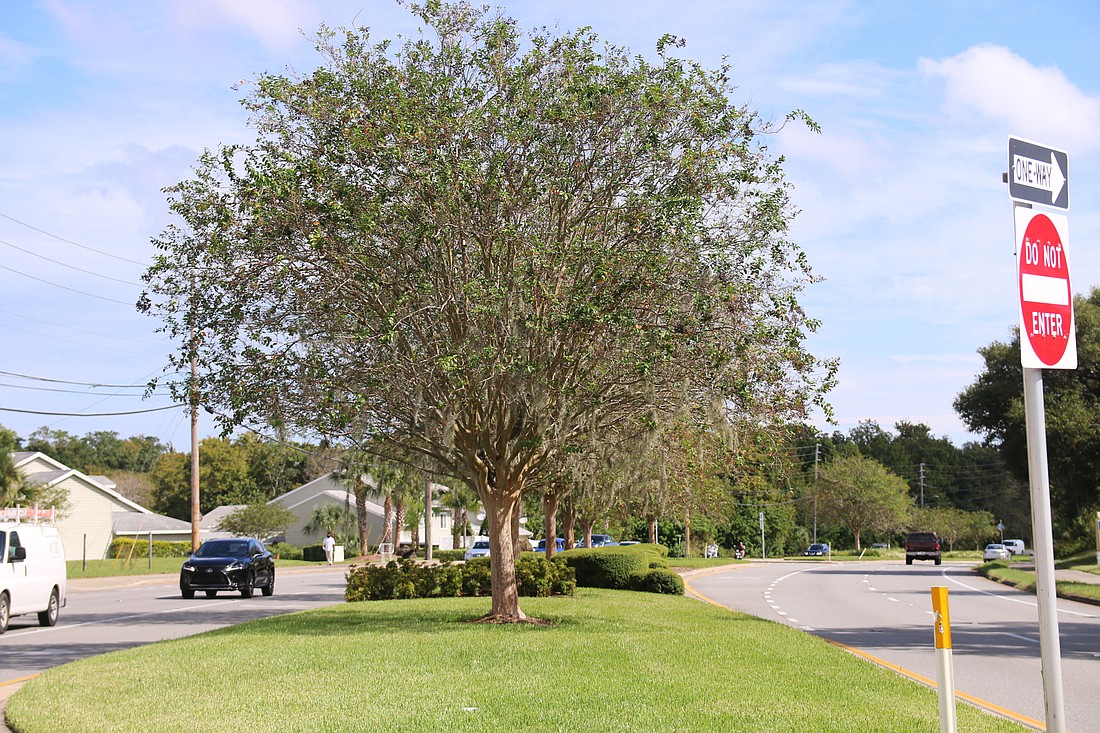- April 25, 2024
-
-
Loading

Loading

For over a decade, palm trees in Florida have been facing a plague with no cure. Lethal Bronzing Disease has impacted and killed 16 different types of palm trees in 31 counties, reported as close as Brevard and St. Johns County.
In September, the city of Ormond Beach accepted a $839,700 bid from R.J. Landscape Contractors, Inc. to plant 103 palm trees in medians from west of the I-95 overpass to Orchard Street. However, the city staff said the chances of the new palm trees contracting LBD are low.
City Landscape Architect Cara Culliver said there have been no cases of the disease in Volusia County. The palms that were chosen for the project are Phoenix dactylifera "Medjool" palms, which she said are less susceptible.
"The Phoenix dactylifera ‘Medjool’ is a superior palm in every respect and its durability in Florida is long proven and well established," Culliver said.
The palm trees will replace the Holly trees currently in the medians, 23 of which have been diagnosed with a fatal fungus disease called Witches Broom years ago. Along with the palms, 22 Crape Myrtles and 2 live Oak trees will be planted as well.
The disease is caused by an unculturable bacterium with no cell wall, called a phytoplasma, according to a report by the University of Florida. It was first detected in 2006 in Hillsborough County and was isolated between four types of palms, including Phoenix Dactylifera. The Medjool palm trees the city is going to plant, and has already planted on medians west of A1A to Orchard Street, are a sub-variety of the Dactylifera.
The phytoplasmas live where the sap is transported in plants, known as the phloem tissue. The bacterium is transmitted via insects that feed on the sap, mainly planthopper and leafhopper insects.
The first symptoms of LBD vary, the report states. If a palm tree has fruit, one of those symptoms would be premature fruit drop. Other identifying characteristics are the collapse of spear leaves.
Don Spence, an associate professor of Biology at Bethune-Cookman University with a doctorate in plant pathology, likened the spread of LBD to malaria — just like mosquitos spread the disease in humans, insects spread LBD to different trees.
Plants infected with LBD don't live long-term, Spence said. And while the disease has yet to be documented in Volusia, it doesn't mean it never will be. Medjool palms, he said, are susceptible to the disease because they share the same Phoenix genus.
“It’s just outside of our borders and it likely will be here in the near future," Spence said.
The city is buying the Medjool palms from GroundWorks, a grower of specimen palms located in Boynton Beach and Houston, Texas. Culliver said GroundWorks owner George Nottingham has "decades of direct experience and expertise knowledge about Phoenix palms."
She said that, because Medjools are clone produced, they are more resistant to LBD unlike palms that are seed-produced.
"He has inspected an almost countless number of sites where Medjools have been installed during the past 25 years and he have yet to see a previously well maintained, fully-established variety certified Medjool Date Palm succumb to either Lethal Bronzing or Lethal Yellowing (Phytoplasm) disease," Culliver said.
Should LBD reach Volusia County, the palm trees would be inoculated with an antibiotic injection called Oxytetracycline. Each dose would cost about $21 per tree. If each one of the new palm trees needed the injection, that would carry a price tag of $2,163.
"The best protective measures for keeping our palms healthy is keeping to a strict fertilization program and ample water," Culliver said.
The planting of Medjool palm trees poses another question: Why not opt to plant native species?
The Medjool is native to the Atlantic Coast of Morocco, according to the GroundWorks website. Crape Myrtles originated in Asia.
Culliver said requirements from he Florida Department of Transportation play a big role in plant selection. All proposed trees and palms must have 8-foot trunk at installation to create for motor vehicle visibility. That limits what can be planted.
Cities are also bound to follow the FDOT Bold Landscape Standards, meaning they have to plant large mature palms or trees to create a bigger visual impact. The Medjool palms and Crape Myrtles abide by these requirements.
However, Culliver said that some native plants are used in medians across the state, including Coontie, Dwarf Yaupon, Holly, Muhly grass and sand cordgrass.
Spence said that while there are many native plants the city can use, the problem derives from maintaining grass in the medians. That can adversely impact the planted trees.
Soil is also another issue, he continues. Many medians are comprised of a construction-type soil.
“The trees struggle because they just don’t have good rooting conditions," Spence said.
The concerns regarding the future palm trees on Granada are an example of the movement recognizing the value of native species, he said. But, having a native species is only good if its matched by great care.
“We have to cultivate things in a more landscaping or plant-friendly manner for plants to be successful," Spence said. "If we concentrated on using natives, we’d tend to have fewer disease problems.”